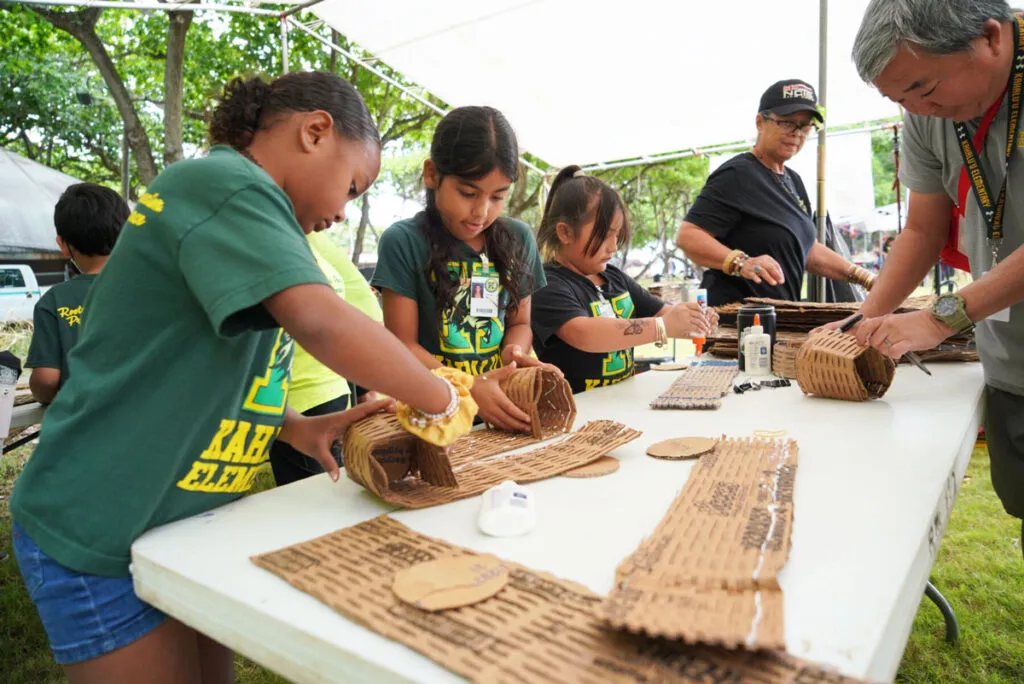Hawaii, a paradise island in the middle of the Pacific Ocean, is not only famous for its natural beauty but also holds a pivotal position in the maritime trade history of the world. This article takes you on a deep exploration of the evolution and development of maritime trade in Hawaii, starting from the earliest voyages of Polynesian navigators to Hawaii’s emergence as a global trade hub. Together, we will uncover the factors that shaped the unique history of maritime commerce on this island and its impact on Hawaii’s economy, society, and culture.
Hawaii is the only U.S. state with an official native language, Hawaiian, which, alongside English, serves as one of its official languages. In 1987, the Hawaii Department of Education established the Hawaiian Studies Program and Ka Papahana Kaiapuni Hawaiʻi to promote the study of Hawaii’s culture, language, and history as mandated by the Hawaiʻi State Constitution.
The Early Beginnings: Polynesian Maritime Trade
Before European explorers arrived, Hawaii was already a flourishing society with a distinct maritime culture. The ancestors of the Hawaiians, courageous Polynesians, navigated thousands of miles across the Pacific Ocean in double-hulled canoes (waʻa kaulua) to settle on the islands.

Polynesian canoe art created by students
These voyages were not just exploration endeavors but also formed vital trade networks between islands in the region. The Polynesians exchanged goods such as food, tools, jewelry, and cultural artifacts, creating an early yet crucial maritime trade system.
The Arrival of Europeans and Changes in Trade
In 1778, Captain James Cook landed in Hawaii, marking a major turning point in the island’s maritime trade history. The arrival of Europeans ushered in a new era filled with opportunities and challenges.
Initially, Hawaii became a key stop for European and American ships on their trade routes between Asia and North America. Sailors sought essential supplies like food, fresh water, and other provisions while exchanging goods such as metals, textiles, and weapons.
However, this trade brought unintended consequences, including the spread of diseases and the depletion of native resources.
Hawaii’s Emergence as an International Trade Hub
By the 19th century, Hawaii had risen as a prominent international trade hub, especially in the sugarcane industry. Thriving sugar plantations attracted investments and workers from across the globe.
Hawaii became a crossroads for ships transporting goods from Asia, Europe, and the Americas, turning the islands into a “sea intersection” in the Pacific Ocean. The booming sugarcane industry also stimulated the growth of auxiliary industries such as maritime shipping, shipbuilding, and financial services.
The Decline of Traditional Maritime Trade and the Rise of Tourism
In the late 19th and early 20th centuries, Hawaii’s annexation by the United States and advancements in aviation dramatically altered the trajectory of the island’s maritime trade.
Traditional maritime commerce began to decline as shipping routes shifted, and other industries took center stage. However, this decline heralded a new chapter for Hawaii: the rise of its tourism industry.
Hawaii transformed into a world-renowned tourist destination, attracting millions of visitors every year. Tourism has become a major source of income for Hawaii, driving growth in sectors like hospitality and entertainment.
Preserving Hawaiian Culture and Language
The Hawaiian Studies Program is a K-12 initiative that provides curriculum support and resources for teaching and learning Hawaii’s culture, history, and language. Established in 1980 to implement the 1978 Constitutional Amendment mandating the state to promote Hawaiian culture, history, and language studies, the program emerged during Hawaii’s cultural renaissance. Community leaders worked to integrate education with essential aspects of Hawaii’s native culture and history.
Hawaii’s education includes key knowledge, skills, and practices such as:
- Ka mālama ʻāina – Knowledge and stewardship of land, ocean, and sky.
- Ka moʻolelo Hawaiʻi – Language, legends, stories, and arts of Hawaii.
- Ka nohona – Culture and lifestyle practices of the Hawaiian people.
- Ka ‘ike kūpuna – History, ancestry, genealogy, and governance of Hawaii.
The Future of Maritime Trade in Hawaii
Today, maritime trade continues to play an important role in Hawaii’s economy, though it no longer holds its historic dominance. Honolulu Harbor remains one of the largest ports in the United States, handling goods from all over the world.
However, Hawaii faces new challenges in the era of globalization and climate change. Protecting marine ecosystems and pursuing sustainable development are top priorities to ensure that Hawaii can continue to benefit from maritime trade in the future.
Conclusion
Exploring the maritime trade history of Hawaii reveals the dynamic evolution of the islands over time. From Polynesian voyages to Hawaii’s rise as an international trade hub, maritime commerce has played a crucial role in shaping the history, economy, society, and culture of Hawaii.
Moving forward, Hawaii must seek innovative solutions to develop its maritime trade sustainably while preserving its unique cultural and environmental heritage. Can Hawaii continue its legacy of success amidst a rapidly changing world?